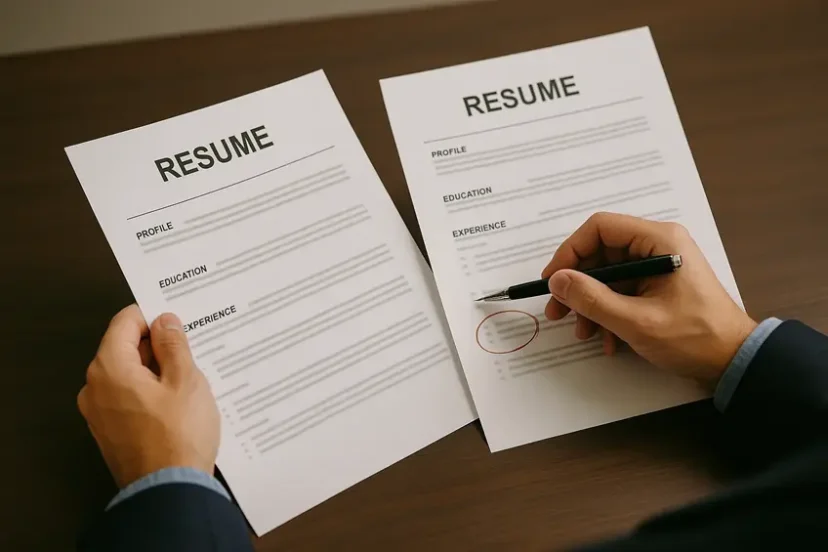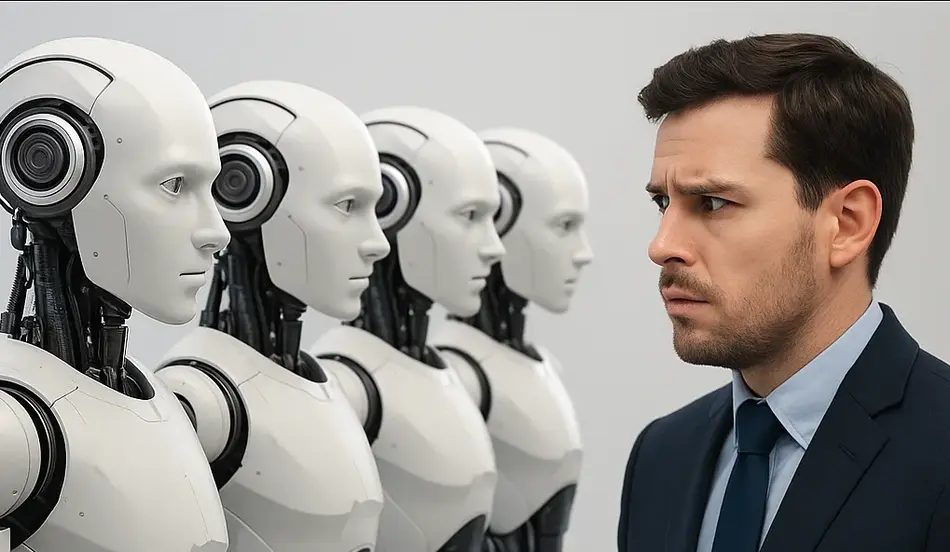The Robots Are Here, Chapter 2: How to Spot a Human
- The Robots Are Here, Chapter 2: How to Spot a Human - October 13, 2025
- The Robots Are Here : Chapter 1 - October 8, 2025
Last week, we talked about the new reality of hiring: a flood of perfectly formatted but often soulless, AI-generated resumes. It’s a frustrating challenge that leaves many of us wondering if we can still find genuine candidates in the pile.
I believe we can. The solution isn’t to build a better robot filter; it’s to become better human signal-finders.
After two decades in this industry, I’ve learned to look for small but powerful indicators that reveal a candidate’s genuine interest and effort. In a world full of AI noise, these human signals are more valuable than ever. Here are three of the most important ones I look for.

1. They Did Their Homework (Beyond the Homepage)
The first signal is evidence of genuine research. I’m not talking about a candidate who can regurgitate a line from the “About Us” page. I mean they’ve looked deeper.
A real candidate connects their skills to the specific journey your company is on.
- They might mention something from a recent blog post, a product update, or a press release.
- They’ll call out a unique detail about the role’s impact, like: “I noticed you’re expanding into the European market — my experience in launching products in Germany could be directly relevant here.”
If an application feels incredibly smooth but says nothing that required a single click beyond your homepage, it’s a red flag. Real interest sparks real curiosity.
(Why AI struggles: Most bots can only pull generic info. They rarely dig through press releases or understand the nuances of your business strategy enough to connect it to their own experience.)
2. They Tell Career Stories, Not Just List Skills
A resume is a list of skills; a career is a story. I always look for candidates who can tell a story, complete with concrete numbers and nuanced anecdotes.
A robot will tell you: “I have marketing experience.”
A human will tell you: “I grew our inbound leads by 42% in six months by launching a new referral strategy.”
Great candidates aren’t afraid of the messy details of their career. They might even mention a learning moment or a time they had to pivot. This kind of authentic, specific storytelling is incredibly difficult to fake.
(Why AI struggles: Bots are great at listing buzzwords, but they can’t invent the believable, imperfect, and metric-driven details of a real career journey.)
3. They Ask Thoughtful, Forward-Looking Questions
A powerful human signal can often be found in the questions a candidate asks. An AI-generated cover letter is designed to give answers, not ask questions.
A genuinely interested person is already picturing themselves in the role. They’re thinking about the future and what success looks like. They’ll ask things like:
- “How do you measure success for this role in the first 90 days?”
- “What is the biggest challenge the team is currently working to solve?”
A thoughtful question is a sign of deep engagement. It shows they’re not just applying for a job; they are interested in this job.
(Why AI struggles: It can mimic tone, but it rarely asks insightful, situational questions that show genuine curiosity about the work itself.)
Finding the Signal in the Noise
Spotting these signals takes a keen eye, but most of all, it requires a simple and efficient process. That’s why I believe a hiring platform’s most important job is to give you the tools to quickly cut through the noise and focus on the human details that truly matter.
Hiring in the age of AI isn’t about having a better robot filter; it’s about being a more discerning human leader.
Next week, in Chapter 3, we’ll talk about the first and most important tool in your toolkit: the job description itself, and how to write one that attracts humans, not just robots.
All the best,
Alexander Paterson
Founder & CEO
